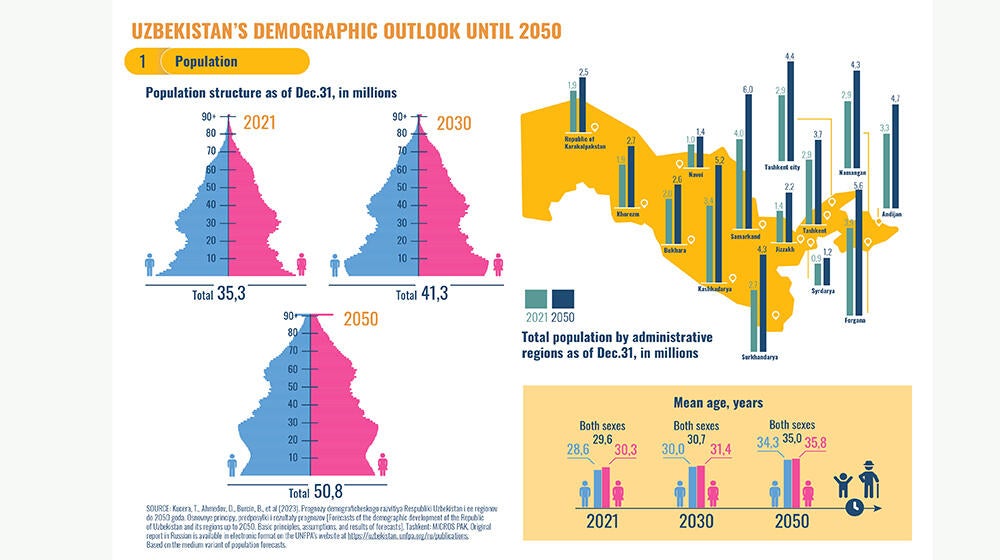TASHKENT, 8 June, 2023 - A roundtable discussion was held in Tashkent to present population forecasts for the Republic of Uzbekistan and its regions until the year 2050. The discussion included the presentation of the results of a fertility survey. The event was organized by the Agency on statistics under the President of the Republic of Uzbekistan and the United Nations Population Fund (UNFPA).
More than 80 participants including representatives of ministries, government departments, international organizations and academia took part in the round table. The forecast of the demographic development of the Republic of Uzbekistan and its regions for the years up to 2050 was presented and debated at the event, together with the findings of a sample survey to examine fertility variables.
The presented forecast study, which included 14 regional forecasts for the Republic of Karakalpakstan, twelve administrative regions of Uzbekistan, and the city of Tashkent, as well as a forecast for the Republic of Uzbekistan, was developed by a joint group consisting of national experts and international experts from the Charles University of the Czech Republic, with financial support from the representative office of the UNFPA in Uzbekistan. The Agency on Statistics under the President of the Republic of Uzbekistan provided detailed official population statistics for 2000–2021, which served as the basis for a predictive-oriented analysis of demographic trends both at the national and regional levels.
Use of the results of predictive calculations carried out in the present study will allow government bodies to make the most effective decisions for social and economic development at the national and regional levels.
In accordance with the forecast, the population of the Republic of Uzbekistan will grow dynamically in the next three decades. With the highest probability, by 2028 the population of Uzbekistan will number 40 million inhabitants, and by 2050 the mark of 50 million people will be exceeded. At the same time, natural growth will play a key role in population reproduction for the duration of the projection period. The population will continue to age quickly despite the high dynamics of population increase, with all age structures experiencing the most significant alterations.
Mr. Yu Yu, the UNFPA Representative in Uzbekistan, noted in his speech that "demographic trends are under the close attention of the public of New Uzbekistan, many of which serve as the basis for the development strategies. Thus, national capacity in the field of demographic forecasting, namely anticipating the nature and consequences of significant demographic changes and implementing proactive planning based on analysis, is critical to realizing the aspirations of New Uzbekistan. This is one of the main areas of partnership between the United Nations Population Fund and the Government of Uzbekistan.
During the event, experts also presented the results of a sample survey on the study of fertility factors in the Republic of Uzbekistan, conducted by the Institute of Family and Women with extensive technical support from the Charles University of the Czech Republic. The study provided important information about the factors that influence the birth rate and reproductive behavior of women in Uzbekistan. According to the results of the survey, the improvement in the financial situation of families with children and a general increase in the level of people's confidence in the future can be considered the main factors in the growth of the birth rate after 2017 in Uzbekistan. At the same time, among the youngest cohorts of respondents (born during the 1997-2003 period) there is a deviation towards decrease of their expected fertility (i.e.,the number of children expected by the end of the reproductive period) from initial reproductive attitudes and plans. All the formulated assumptions served as the basis for estimating the parameters of the classical cohort-component projection model, a widely used population forecasting method.


